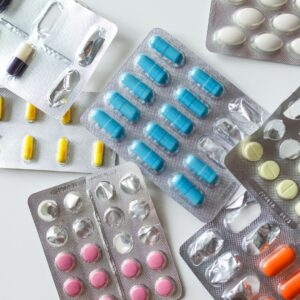The Future of Pharma Blister Packaging: Enhancing Patient Adherence and CompliancePosted by Pearl Smith on July 18th, 2023  In the future, the pharmaceutical industry is expected to continue evolving blister packaging to enhance patient adherence and compliance. Blister packaging refers to the individual compartments or pockets that hold medication doses, often arranged in a sheet format. Here are some potential advancements and trends that could shape the future of pharma blister packaging: Smart Packaging: Blister packs could incorporate smart technologies such as RFID (Radio Frequency Identification) or NFC (Near Field Communication) tags. These tags can be scanned by smartphones or other devices to provide information about the medication, dosage instructions, and even reminders for patients to take their medication on time. Connected Packaging: Blister packs may become part of an interconnected system that includes mobile applications or wearable devices. This integration can enable real-time monitoring of medication intake and provide feedback to patients or healthcare professionals. For instance, a smart blister pack could send notifications to remind patients to take their medication and track their adherence. Interactive Packaging: Future blister packs may include built-in sensors or indicators to provide feedback on medication usage. These sensors could detect when a dose has been taken or indicate if a medication has expired or been tampered with. Such interactive features can help patients ensure they are taking the right medication at the right time. Personalized Packaging: Blister packs could be customized to accommodate individual patient needs. This could include packaging options for different medication schedules (e.g., once-daily, twice-daily) or the ability to combine multiple medications in a single pack. Personalized packaging can simplify medication management and reduce the risk of medication errors. Child-Resistant and Senior-Friendly Designs: Efforts will likely continue to make blister packs more accessible for patients of all ages. Child-resistant designs can prevent accidental ingestion by young children, while senior-friendly designs can include features like larger text, easy-to-open tabs, or color-coded sections for improved visibility and usability. Environmentally Friendly Materials: Sustainability concerns are likely to drive the development of eco-friendly blister packaging materials. Biodegradable or recyclable materials could replace traditional plastics, reducing the environmental impact of pharmaceutical packaging. Integrated Information: Blister packs may include additional information beyond the medication itself. This could involve QR codes or augmented reality features that provide access to comprehensive drug information, potential side effects, and instructions for use. Overall, the future of pharma blister packaging aims to improve patient adherence and compliance by leveraging smart technologies, connectivity, customization, and user-friendly designs. These advancements can enhance patient safety, simplify medication management, and empower individuals to take control of their healthcare. Like it? Share it!More by this author |


